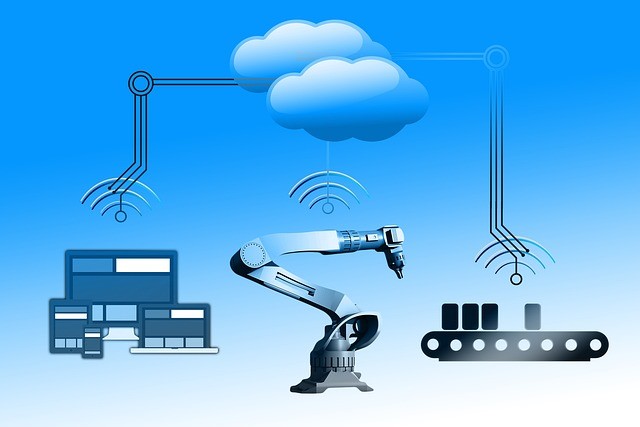In today’s business environment, many companies save costs and increase productivity with custom software. A custom software application is specifically built to improve business processes such as customer interactions and workflows, allowing a company to gain a competitive advantage.
A better customer experience can be achieved by enhancing user experiences and increasing response times. A custom business application can also automate repetitive tasks and decrease manual work, allowing a company to improve its overall workflow efficiency.
Custom software in business refers to applications that are custom-made specifically for the unique requirements of a particular company. Custom software differs from commercial off-the-shelf software in that it is developed from the foundation up to manage specific circumstances, workflow, and business goals. In contrast, off-the-shelf software is pre-built for general use and usually requires adjustments and configurations for optimal functionality.
Custom Software and Business Ecosystems

A business ecosystem is a large network of organizations that rely on each other to produce and sell products and/or services. Manufacturers depend on specific raw material suppliers. End users depend on the manufacturer’s goods to run their own business. Such an ecosystem offers various mutual benefits for each organization involved in the network. For example, a small organization may partner with a medium-sized company to access a new customer base. In the IT sector, leading tech companies may partner with independent developers to increase the size of their platforms, enhancing the innovation and functionality of their products.
The software development cost for a company in a business ecosystem is often worthwhile because a custom application can create long-term benefits. Custom software enables companies to improve their position in the ecosystem, allowing them to respond to changes in the market and make the most of opportunities. Integrating custom software into a connected business ecosystem allows organizations to enhance interactions in various ways. Keep reading to discover how companies can utilize custom software in business ecosystems.
Automate Repetitive Tasks
Custom software automates repetitive tasks like data entry, invoice processing, and report generation, freeing up employee time. As a result, staff members can focus more on important tasks like customer acquisition, product development, and financial planning. Automating repetitive tasks also eliminates human error which is particularly beneficial in data entry. Furthermore, companies can save on manual labor costs while improving compliance with industry-specific regulations due to better accuracy.
Seamlessly Connected Platforms
Custom software can provide a central platform that allows businesses, partners, customers, and suppliers to seamlessly connect and become unified. Existing software like supply chain management systems, enterprise resource planning systems (ERPs), and customer relationship management systems (CRMs) can integrate with complementary applications in other organizations. This can be done using the capabilities of custom software like data mapping, cross-company workflows, and real-time data.
Collaboration Between Departments

Collaboration can improve considerably among teams across departments and organizations with custom software in a connected business ecosystem. Integrated custom software systems allow employees from different departments such as sales, marketing, and finance, to work from the same real-time data. Features such as project management tools, shared documents, and online meeting spaces enable teams to collaborate from any location, breaking down silos and improving understanding among teams.
Flexibility and Scalability
Custom software is often recommended for businesses in connected ecosystems because it is highly flexible. As new opportunities emerge within an ecosystem and a company grows, custom software can be modified and expanded according to specific requirements. Companies can stay competitive by constantly adapting their custom software to keep up with technological innovations. In addition, custom software is scalable as it can be designed to integrate with other systems and manage increasing workloads without compromising performance.
In comparison, off-the-shelf software is less flexible and scalable than custom software. It is usually developed to meet the general requirements of a broad range of users. Although it may have some flexibility, off-the-shelf software has limits when adapting to specific business needs. It is also less scalable than custom software as aspects such as licensing costs can make it less cost-effective. Also, performance bottlenecks can result in slower processing times and reduced system efficiency.
Improved Decision-Making
Custom software integrates data across a business ecosystem, empowering business leaders to make better, more informed decisions. Business leaders can have custom software modified specifically to carry out scenario modeling and risk assessment. This enables the business to simulate different outcomes of various business decisions and evaluate the results before carrying them out. For example, customer demand, economic circumstances, and tax regulations can be considered with a custom application before deciding whether a company should enter a market.
In Conclusion
The integration of custom software in a connected business ecosystem empowers companies by reducing costs, increasing efficiency, and improving customer service. By utilizing custom software, business leaders can tailor applications to meet the specific needs of their organizations and increase their profit margins. Processes such as automating repetitive tasks, connecting organizational platforms, and improving decision-making enable a company to gain a competitive advantage, ultimately leading to company growth.






